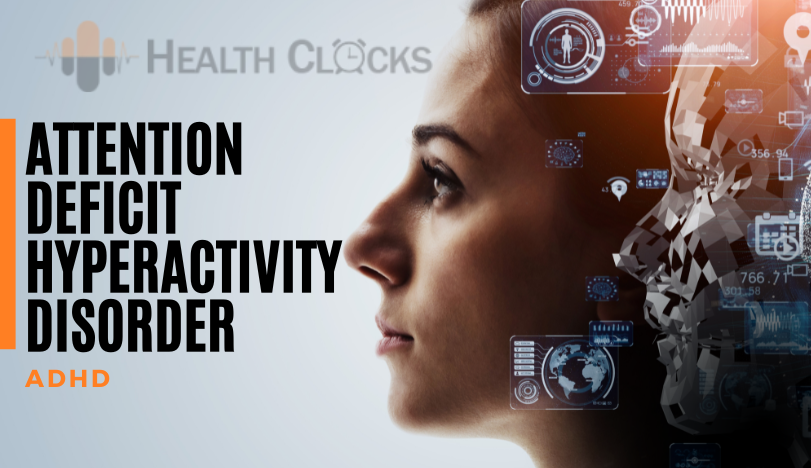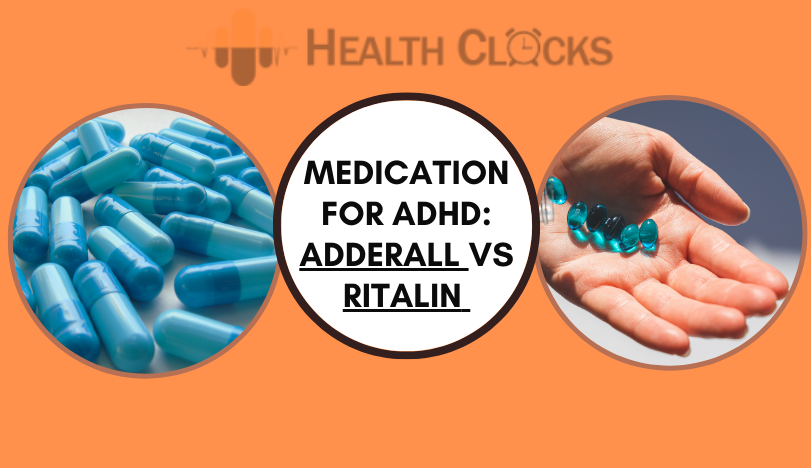Attention Deficit Hyperactivity Disorder (ADHD)
What is ADHD?
ADHD is a neurodevelopmental disorder that affects the ability to focus, pay attention, and control impulsive behavior. It can disrupt school, home, and relationships.
It’s a mental disorder that affects about 5% of children and adolescents in the US. ADHD manifests as inattention, hyperactivity, and impulsivity. It is a common childhood disorder. Adolescents with ADHD are typically treated with medication and behavioral therapy, and Teenagers with ADHD may act impulsively, get distracted easily, and not pay attention. These bad habits can significantly affect their lives and those around them. ADHD is a disorder found in children as young as five. It’s essential to understand what ADHD is and how it can affect a teen.
Types of ADHD
ADHD is a mental condition that can make it hard to pay attention, stay on task, and act correctly. There are three main kinds of ADHD: inattention, hyperactivity/impulsivity, and a mix of the two. Different people with ADHD have various symptoms, but most have trouble focusing, keeping their emotions in check, and staying on task. People with ADHD often have problems at school or work, which can be very frustrating. There is no one way to treat ADHD, but most people take medicine and go to therapy.
Three types of ADHD:
- Impulsive-hyperactive type: Impulsive-hyperactive type (ADHD) is a behavior disorder marked by a lack of focus and activity. More boys than girls and more kids than adults have ADHD symptoms. People with ADHD can sometimes have trouble staying organized and on task, which means they may always be late and find it hard to sit still. A person with ADHD might also find it hard to remember things.
- Combined type: Having more than one type of ADHD is meant as a “combined type.” People have a 50 percent chance of having ADHD. Those with two classes have a 75 percent chance, and those with three categories have an 87.5 percent chance.
- Inattentive: Inattentive type is a subtype of ADD marked by a short attention span, difficulty focusing, and a short attention span. It is not the same as the hyperactive type or the combined type of ADD, marked by high levels of not paying attention and being too active.
ADHD in Children
ADHD is a mental disorder that can make it hard to pay attention, be hyperactive, and act on impulses. ADHD is one of the most experience of depression in children as per the National Institute of Mental Health. Most of the time, the signs show up in preschool and can last until the child is a teenager. ADHD is a disorder that lasts a person’s whole life, and the symptoms often stay with them into adulthood.
This is a brain disorder that makes it hard for a child to focus and control their actions. It’s usually diagnosed in kids when their behavior causes problems at school or when their ADHD makes it hard for them to do well in school.
Symptoms of ADHD in Children include:
- Difficulty focusing and paying attention
- Being easily distracted
- Having difficulty following directions
- Losing track of time
- Trouble completing tasks
- Failing to finish assignments
- Not listening to instructions
ADHD Symptoms and treatment
No one, not even your doctor, can tell for sure just by seeing if you have ADHD. This is because the signs of ADHD are different for each person. They can range from having trouble focusing to being hyperactive, impulsive, or not paying attention.
ADHD can be diagnosed with the help of a trained mental health professional, such as a psychiatrist, psychologist, or clinical social worker. Factors that may contribute to ADHD include anxiety, stress, trauma, or inconsistent work schedules. Treatment for ADHD may include medications, psychotherapy, or a combination of the two.
Several treatments are available for ADHD, including medication, behavioral therapy, and lifestyle changes.
- Medication: Most of the time, stimulants like Ritalin or Adderall are used to treat ADHD. Dopamine levels in the brain are increased due to taking these drugs. They also lower the amount of serotonin and norepinephrine in the brain. Norepinephrine and serotonin are chemicals that affect how we feel and how much energy we have. Some of the side effects of stimulant drugs include insomnia, stomachaches, nausea, headaches, and a loss of appetite. Some patients may become used to the medicine after using it for a long time.
- Behavioral Therapy: In behavioral therapy, Children learn to control their feelings and actions. This treatment involves learning how to relax, deal with stress, and hold yourself. Most of the time, medication is used with behavioral therapy.
- Lifestyle Changes: Some parents find that changing their child’s diet helps decrease the symptoms of ADHD. Children with ADHD often eat foods high in sugar and fat. Parents should avoid giving their children sugary snacks and fast food. Instead, they should give their children fruits, vegetables, whole grains, lean meats, and low-fat dairy products.
What can cause Attention deficit hyperactivity disorder (ADHD)?
Although there isn’t one single cause of ADHD, researchers believe genetics play a role. Other factors include brain chemistry, environment, and nutrition.
- Brain Chemistry: Researchers believe that certain chemicals in the brain called neurotransmitters may affect how the brain works. The most commonly studied neurotransmitter is dopamine. Dopamine helps control movement, motivation, and pleasure. Researchers think that people who have ADHD might have too much dopamine in their brains. People with ADHD also tend to have lower levels of another chemical called norepinephrine.
- Norepinephrine plays an integral part in regulating sleep cycles, alertness, and emotional responses.
- Environment: Children whose mothers had higher lead levels during pregnancy were more likely to have ADHD than those whose mothers did not have elevated levels of information. People exposed to lead have had trouble controlling their impulses and focusing.
- Nutrients: A study published in Pediatrics found that children who ate diets rich in omega-3 fatty acids (found in fish) were less likely to be diagnosed with ADHD. Omega-3s help regulate the activity of dopamine and other neurotransmitters in the brain.
Attention Deficit Hyperactivity Disorder (ADHD) and Chronic Fatigue Syndrome
Chronic fatigue syndrome is a disorder that is frequently associated with attention deficit disorder (ADD) and anxiety. Attention deficit hyperactivity disorder (ADHD) is another name for chronic fatigue syndrome. ADHD CFS is similar to chronic fatigue syndrome but with several typical symptoms of ADHD. ADHD CFS is a poorly understood condition and controversial.
The prevalence of ADHD is estimated to be between 2-6% in the United States, with a ratio of approximately 1:9 for girls and 1:10 for boys. ADHD is often associated with chronic fatigue syndrome or CFS, and a new study by the National Sleep Foundation found that those with ADHD are more likely to be tired.
Chronic Fatigue Syndrome (CFS) is a complex illness that causes debilitating fatigue, often accompanied by cognitive impairments.
Both conditions affect children and adults. The symptoms of ADHD include difficulty focusing, paying attention, being organized, completing tasks, controlling impulses, and following directions. CFS symptoms include extreme tiredness, muscle aches, joint pain, headaches, trouble sleeping, and problems concentrating.


